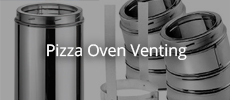X
-
Oil your forms and vibrate the sides of the mould when you lay up the slab. This will ensure a good release from the forms and eliminate voids.
-
If I had a planer, I would have run these boars through to make sure they had a nice smooth finish. There are still a fair amount of imperfections, even though I was pretty selective at the lumber yard. So I think I'll take a sander to the inside edges, a well as some filler to make sure I've got a clean finish. I thought I might glue down a strip of cove molding on the bottom too, just to get a nice finish around the bottom corner.
I was looking at a amateur video on a concrete countertop install for an outdoor kitchen, and noticed that they had a really thick mix which ended up trapping a lot of air bubbled around the edge.
Any tips from the pros on prep work and/or shortcuts to achieving a nice finish?
Leave a comment:
-
Place wedges under the timber props for easier removal as well as eliminating the risk of damage to the slab if they have to be belted out.
Leave a comment:
-
Short update for today - got the form walls in, but still need the supports around the outside per comments from MarkJerling. Still some minor warping on the plywood but addition of the hearth wall forms mostly sorted that issue. The form is square, plumb and nearly level. I'll put the final touches on it once the outer supports are set.
Will have 12 legs around the perimeter each resting on a 12x12 paver. The ground is also pretty well compacted so hopefully no sag as the concrete is poured.
Then I'm taping joints and screw heads followed by rebar. Hopefully I'll be ready to pour concrete next week.
- Likes 1
Leave a comment:
-
That's looking good, but remember that wet concrete is very very heavy, so you need to have good support under those edges to carry the load (2,500kg per cubic metre of concrete) while the concrete is wet.
You'll be able to remove your supports after 4-5 days, but best to leave the supports in place for at least a week, preferably 2 weeks.
Leave a comment:
-
Yesterday I got a bit of a late start and worked till dark on the hearth form, so had to wait til morning for pictures and an update. I spent half the day dithering about how I was going to transport and cut a 4'x8' sheet of plywood, until I remembered that the Depot could cut it for me.
In order to save some money on materials I scraped the excess concrete off my 2x12 form boards for the pad and then ripped them down to 2x4 nominal with the tablesaw for the hearth. Cost a little time but probable saved close to a bill in expenses. After drawing out my plan and a list of materials I went shopping!
Unfortunately, the guy operating the tablesaw read 1.5 feet as 12.5 inches. And that left the front and back panels for my hearth a little short. The good news, I technically only needed 10" wide, so 12.5" is a little over the minimum.
Returning with my supplies I got to work and encountered my second challenge of the day - the cut down plywood started to bow, and one piece was really pronounced. I decided to screw the plywood sheets to the framing 2x4 for dimensional stability, but the bow was so pronounced on one side that 2x4 under was flexed too! So I stacked 6 of My 12x12 pavers on the center of that board overnight and the issue is mostly resolved.
After today we're in for about a week-long cold snap here - headed for record breaking lows on Tuesday night; although I'm sure our Canadian friends to the north would consider it downright balmy! I'll try to wrap up the framing today then wait for weather to moderate before pouring the concrete next week.
Here are a few pics. You can see the left side is still a couple mm out of level with the stand after weight was removed. I plan to back out the screws on that side and reset them to snug the panel down to the framing.
Last edited by Macrinehart; 02-21-2022, 07:28 PM.
Leave a comment:
-
I agree with JRPizza. I'm not sure how you ate going to finish the stand or if you are leaving it block but I also recommend a stainless steel mesh screen over the block opening. Stainless would be what I use since it will last a lifetime and not rust out.
Ricky
- Likes 1
Leave a comment:
-
If you do build with blocks on edge you might want to put in some sort of screen - the critters like to nest in my wood storage area and I have had to set a few rat traps. Was planning on building a door so I could block it off and would not want to give them a back door
Leave a comment:
-
Poured concrete in the stand today and got some prep work in for framing hearth form. After feedback I switched to a U shaped stand and based on comments regarding pour air flow I flipped one block on its side to allow for ventilation. Well noted on supports under the hearth, UtahBeehiver. Will be working on that tomorrow.
A couple pics from today. The hardybacker is about the extent of the cantilever in front. There will also be cantilevered overhangs on sides and the back. I'll be building the support with 3/4 plywood and 2x4 framing tomorrow. I also got 12x12x1 pavers which I intend to placed under the 2x4 framing so that the forms don't settle into the dirt around the pad once I start pouring the hearth.
Today I also bought a bucket with a pour lip on it for pouring the concrete but it didn't fit well in the cart I was using to mix the concrete. I ended up using one of the kids beach toy buckets and it was just the right size! Also, what the heck happened to my new gloves?! I bought a pair at the start of this project and a seam was torn out of one finger three weeks in! So I got a second pair today, set them down somewhere and their gone! Grrr. Project duration should be measured in the number of pairs of gloves used.
I want to encourage folks to use a mask when mixing concrete or cutting dusty materials. My mask from today was caked with concrete dust after 7 bags, definite do not want that stuff inside your body! Cheers!
Last edited by Macrinehart; 02-19-2022, 04:47 PM.
Leave a comment:
-
You will need to support the hearth underneath during the pour though. Once cured you are good.
- Likes 1
Leave a comment:
-
I think all our brick piles looked like that or worse at the end of the build...LOLOriginally posted by mongota View Post
Macrinehart
I have a 42" oven, I did some rough calculations based on the exterior surface area of the dome divided by the surface area of a half-brick with a bit of fudge factor thrown in for mortar joints on the exterior of the dome. Between that number, then numbers for the floor brick, the landing arch, and chimney transition, adding some in for 'oops' moments, I rounded things off to 275.
I bought a first batch of 224, then went back and bought another 50. So 274 total. I didn't need all of the 50, some of those were for a tandoori oven. Probably used 255-260 in this oven.
I could have been more conservative in some of my cuts, but I just built the thing as I wanted and took what it gave me. Someone could certainly use fewer brick. Or more!
Here's my starting pallet of the original 224, and the offcuts when I was completely done with the oven.
RickyLast edited by Chach; 02-19-2022, 01:12 PM.
Leave a comment:
-
Figuring out the arch/dome interface in my head before building it was a head-scratcher. Once I started building it just all fell together in the most logical manner. I'm sure the same will happen for you as well.
I did my first course of wall brick which causes you to locate your arch bricks so you have the proper opening for your arch. Then you build the arch, cutting each arch brick with the inside (21") and outside (25-1/2") dimensions of your dome.
With the arch done, the arch itself will become a part of the dome as you build up the remaining courses of dome brick.
You'll sit back later and wonder what all the fuss was about. But...having been there and done that? I totally understand the reason for the fuss and the confusion.
Enjoy your build!
Leave a comment:
-
MacrinehartOriginally posted by Macrinehart View PostBy the why - is there a trick for estimating how many fire bricks I'll need to complete the high-dome oven?
Interior diameter of 42 inches. And bricks are 9"x2.5"x4.5".
I have a 42" oven, I did some rough calculations based on the exterior surface area of the dome divided by the surface area of a half-brick with a bit of fudge factor thrown in for mortar joints on the exterior of the dome. Between that number, then numbers for the floor brick, the landing arch, and chimney transition, adding some in for 'oops' moments, I rounded things off to 275.
I bought a first batch of 224, then went back and bought another 50. So 274 total. I didn't need all of the 50, some of those were for a tandoori oven. Probably used 255-260 in this oven.
I could have been more conservative in some of my cuts, but I just built the thing as I wanted and took what it gave me. Someone could certainly use fewer brick. Or more!
Here's my starting pallet of the original 224, and the offcuts when I was completely done with the oven.
Leave a comment:






Leave a comment: